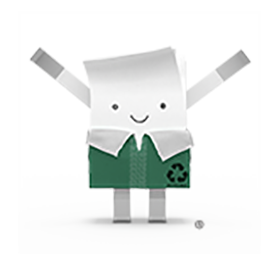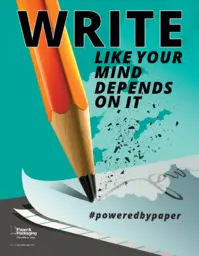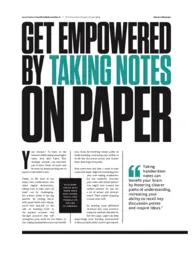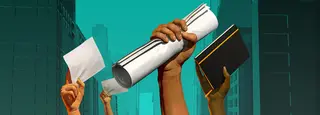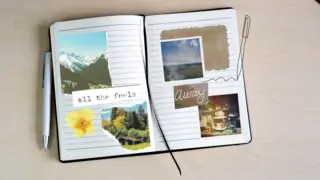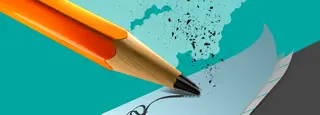
Your mission? To learn in the moment while taking meaningful notes. Your ally? Paper. This strategic partner can empower you to learn more, do more and be more by simply putting pen to paper to take better notes.
Today, in the land of too many tabs, notifications and other digital distractions, taking time to take notes by hand can be challenging, but science shows it has big payoffs. By joining forces with paper when note taking, you’ll find yourself on the side of learning—both in the present moment and through practices that will strengthen your mind for the future. In fact, taking handwritten notes can benefit your brain by fostering clearer paths of understanding, increasing your ability to recall key discussion points and inspire ideas that forge new paths.
Shut down tech and take a stand to take notes with paper. Begin by examining your own note-taking tendencies. Do you naturally structure your notes with bullet points? You might lean toward the outline method. Do you see a lot of arrows and abstract notes? Then maybe mapping is more your style.
By penning some additional structure into your practices using the methods detailed on the next page, paper can help supercharge your learning environment to the next level. Here’s how to get started.
The Outline Method
I. What is an outline?
- A. It's a method of note taking where the first level is a new topic, followed by indented subtopics and supporting information.
- 1. Main topics start on the far left of the page and can be written as questions or statements.
- a. Subtopics are indented beneath main topics.
- 1. Main topics start on the far left of the page and can be written as questions or statements.
II. How do you use an outline?
- A. Listen and write key points following the organizational structure outline above.
- B. Note: You don't have to use Roman numerals or complete sentences when outlining.
- 1. Dashes or bullet points work, too.
III. Why outline?
- A. To keep notes organized and group related concepts together.
- B. Outlined notes are easy to review.
- 1. Turn first-level topics into questions (like in this example) and quiz yourself on the material.
The Cornell Note-Taking System
What is it?
The chart-style method is structured so key points, study cues and summaries appear in an easy-to-digest place on paper.
How do you use it?
Divide each page into two columns and one row at the bottom. Make the right column two to three times the size of the left and use it to record your notes. After class or a meeting, use the left column to write questions and cues based on your notes and the bottom row to write a summary. Review by covering the notes section with a sheet of paper and reciting answers to your cues.
Why use the system?
To engage with material during and after a class or meeting. This method allows you to determine major concepts and reflect on their meanings.
The Mapping Method
What is it?
A visual, nonlinear method that begins with a main topic bubble and branches out into subtopics and key notes.
How do you use it?
Put a main idea at the center or top of a page. Then draw lines, like spider legs, that link the lead concept to secondary ideas, sources or supporting facts.
Why use the system?
Mapped notes are best used for brainstorming, essay planning and meetings with multiple speakers, since you can jump from bubble to bubble. Mapping is a highly visual way to consume, grasp and review information. Ideal for visual and analytical learners, this method helps reveal connections that can be missed in a linear format.
Go Original, or Adopt A Hybrid Solution
Just like people, note-taking methods are not identical, nor is one inherently better than another. The methods above provide useful structures—but you don't need to conform to one system. Pick and choose elements from a variety of methods by examining hybrid note-taking systems, such as the holistic and visual Flow-Based Note-Taking Method, which combines bullet points, diagrams and drawings to explore new information.
Paper is a powerful learning tool and a platform for freedom and flexibility. Use it to discover, adapt or build upon the method that best achieves your learning goals—or be a revolutionary and pen an entirely new system.
Looking to learn something new? Take a look at these printables.

